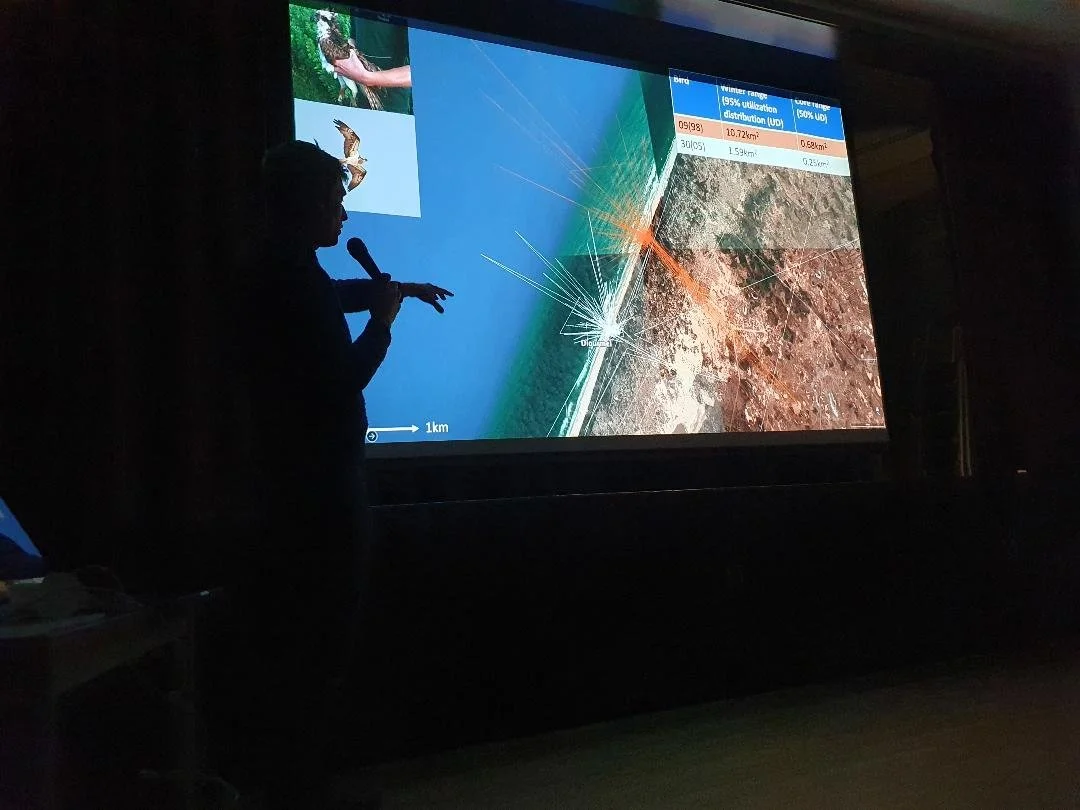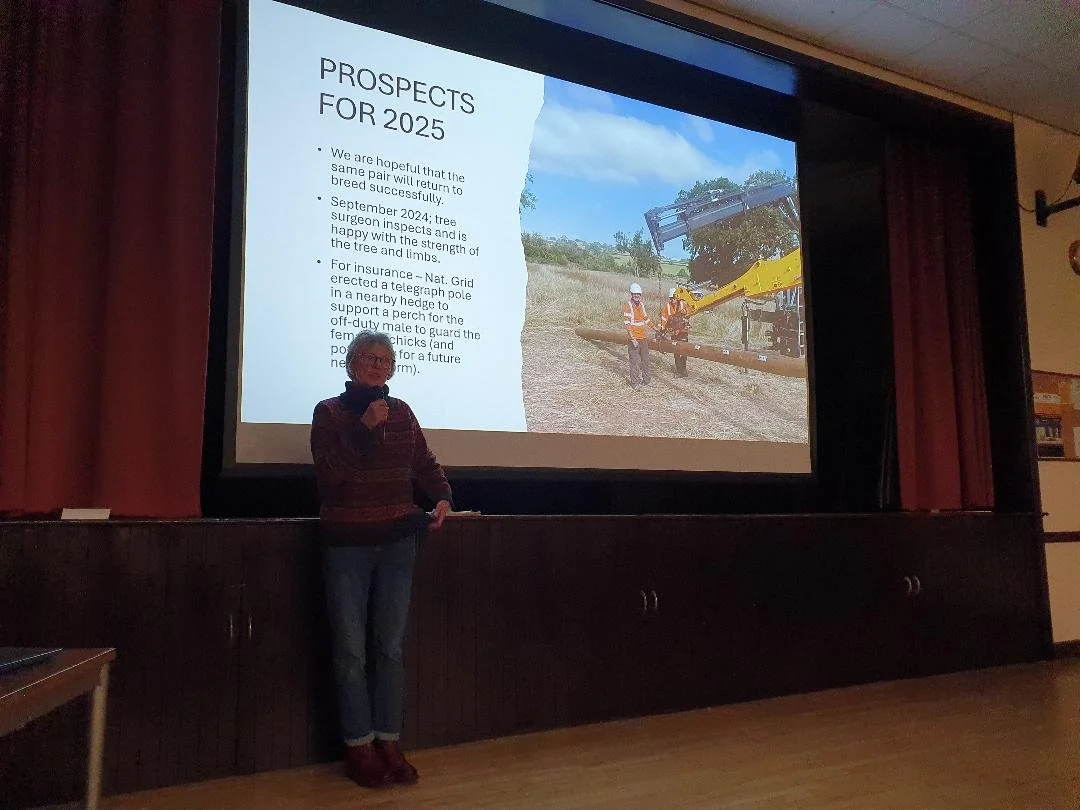‘Osprey Migration’ talk by Dr Tim Mackrill
On 23rd January 2025, Usk Valley Ospreys (UVO) were pleased to invite Tim Mackrill to Talybont-on-Usk. To celebrate the charity’s first year of operation, over 100 members and supporters gathered to learn of the hazardous journeys undertaken by ospreys each spring and autumn.
From the smallest of warblers to the largest of raptors, the inherent drive for species to make these long journeys between breeding and wintering sites never ceases to amaze. Tim described how ospreys have a worldwide breeding range in all continents except Antarctica. Those that breed in northern latitudes in summer, including across much of northern Europe, are forced to fly south towards the Equator to avoid risking frozen waterways in winter. A global map of migration corridors indicated that most from the UK travel along the western coasts of France, Spain and Portugal before picking up the West African coast to winter in Senegal, The Gambia and Guinea-Bissau.
Over the years adult ospreys familiarise themselves with the safest routes, and the location of favoured feeding sites to re-fuel for the next leg. However, juveniles making their first migration unaccompanied face many hazards. Satellite-tracking, and cross-reference to weather conditions, has shown that crosswinds can be the greatest threat to young birds that are less able to compensate should they be blown off-course. Crosswinds are especially risky if pushed further from land into the Bay of Biscay or off the African coast. There are additional risks in searching for reliable feeding sites during migration. Those juveniles that do make it to sub-Saharan wintering sites then run the gauntlet of adult osprey defending their winter territories on the West African estuaries thereby forcing young birds inland into sub-optimal river systems or even wetlands in arid locations that run the risk of drying-out.
Juveniles that leave the UK in their first autumn will remain in Africa for the whole of their second calendar year and into their third by which time the situation will ease after breeding adults have returned north again in spring. That will give young birds the opportunity to move and establish themselves a winter territory of their own with richer feeding. This combination of migratory and establishment hazards may lead to 70% mortality of young birds in their first two years of life.
After Tim’s enlightening talk and a short Q&A session, a break for refreshments was taken. Then followed a recap of the 2024 breeding season at Talybont given by UVO Chairman, Andrew King who went on to describe plans for additional nest cameras and viewing opportunities in 2025. It is hoped that live-streaming will again be available via the UVO website for the benefit of both the membership and the wider public.
Liz Jones and Rachel Milne then took to the stage to appeal for both new and returning ‘Watchers’ to put their names forward to continue with detailed recording of nesting behaviours in what we all hope will be a successful breeding season for the established pair. Tim also gave his confident opinion that breeding would occur in 2025.
Finally, the evening was rounded off by UVO Treasurer David Raikes announcing that for UVO to continue to provide security for these local ospreys, the facilities for public enjoyment of them, and events such as this evening then a reliable income stream will be required. To meet this a membership fee is planned from spring 2025. Subscription rates and membership classes are yet to be finalised.
The UVO Committee thank all those that attended a highly successful evening, with especial thanks to all those that generously gave donations.


